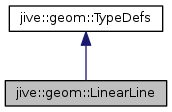|
Jive reference manual
|
|
Jive reference manual
|
Constructs shape objects that encapsulate the geometrical properties of linear line elements. More...

Static Public Member Functions | |
| static jem::Ref< InternalShape > | getShape (int ipCount=2) |
| Returns a shape with a specified number of integration points. More... | |
| static jem::Ref< InternalShape > | getShape (const Matrix &intPoints, const Vector &intWeights) |
| Returns a shape with a specific set of integration points. More... | |
Additional Inherited Members | |
 Public Types inherited from jive::geom::TypeDefs Public Types inherited from jive::geom::TypeDefs | |
| typedef jem::util::Properties | Properties |
| A type representing a set of properties. More... | |
| typedef util::Vector | Vector |
| A vector type. More... | |
| typedef util::Matrix | Matrix |
| A matrix type. More... | |
#include <jive/geom/Line.h>
The LinearLine class provides functions for constructing InternalShape objects that encapsulate the geometrical properties of line elements with two nodes and linear shape functions. The following figure shows how the nodes are numbered (left image) and where they are located in the local coordinate system (right image).

Note that the local node coordinates of a linear line are identical to the node coordinates of a standard linear line.
A linear line has two boundaries (boundary points, to be precise). Boundary 0 coincides with node 0, and boundary 1 coincides with node 1. The normals on these boundaries point away from the interior of the line.
Note that the LinearLine class has only static members; it should be used as a mini name space.
QuadraticLine
|
static |
Returns an InternalShape object that encapsulates the geometrical properties of a linear line element. The integer ipCount specifies the number of integration points within the element.
This function simply executes:
Note that the returned shape object may have less integration points than ipCount; read the documentation of the StdLine class for more information.
| ipCount | - the number of integration points. |
InternalShape object representing a linear line element.StdLine
|
static |
Returns an InternalShape object that represents a linear line element with a specific set of integration points. The matrix intPoints should contain the local coordinates of the integration points: intPoints(i,j) should be equal to the i-th local coordinate of the j-th integration point. The vector intWeights should contain the integration weights in the local coordinate system: intWeights[j] should be equal to the local integration weight associated with the j-th integration point.
Note that the arrays intPoints and intWeights are copied by reference. You should not modify the contents of the arrays after calling this function.
You can use the StdLine class to compute the integration point coordinates and weights. Here is an example:
| intPoints | - a matrix containing the local coordinates of the integration points. |
| intWeights | - a vector containing the local integration weights. |
intPoints.size(0) == 1 &&
intPoints.size(1) == intWeights.size() InternalShape object representing a linear line element.StdLine